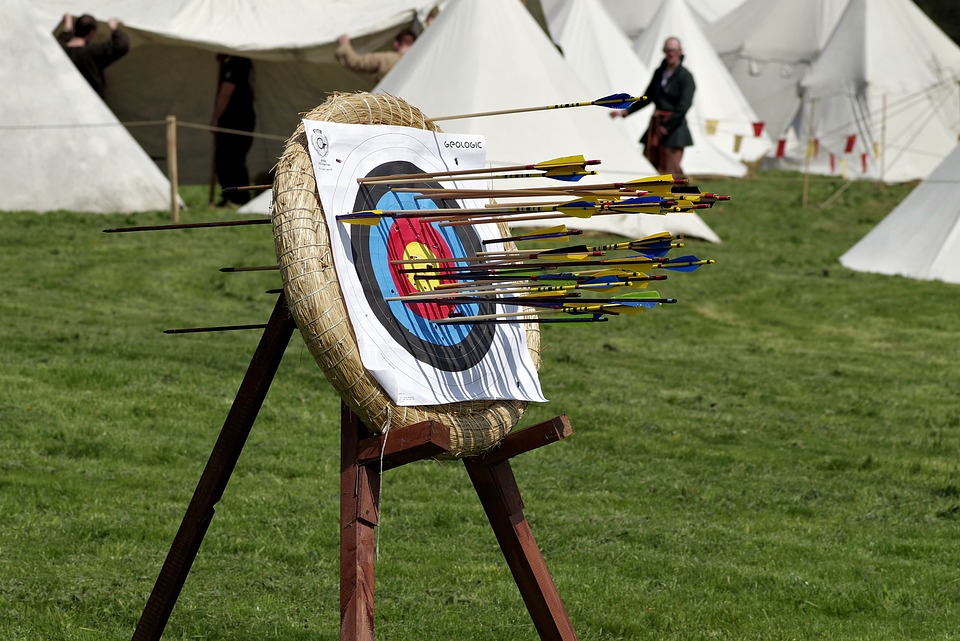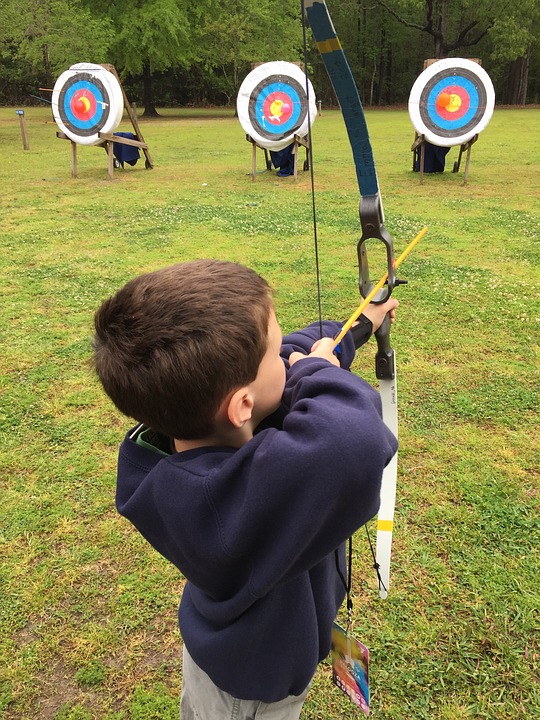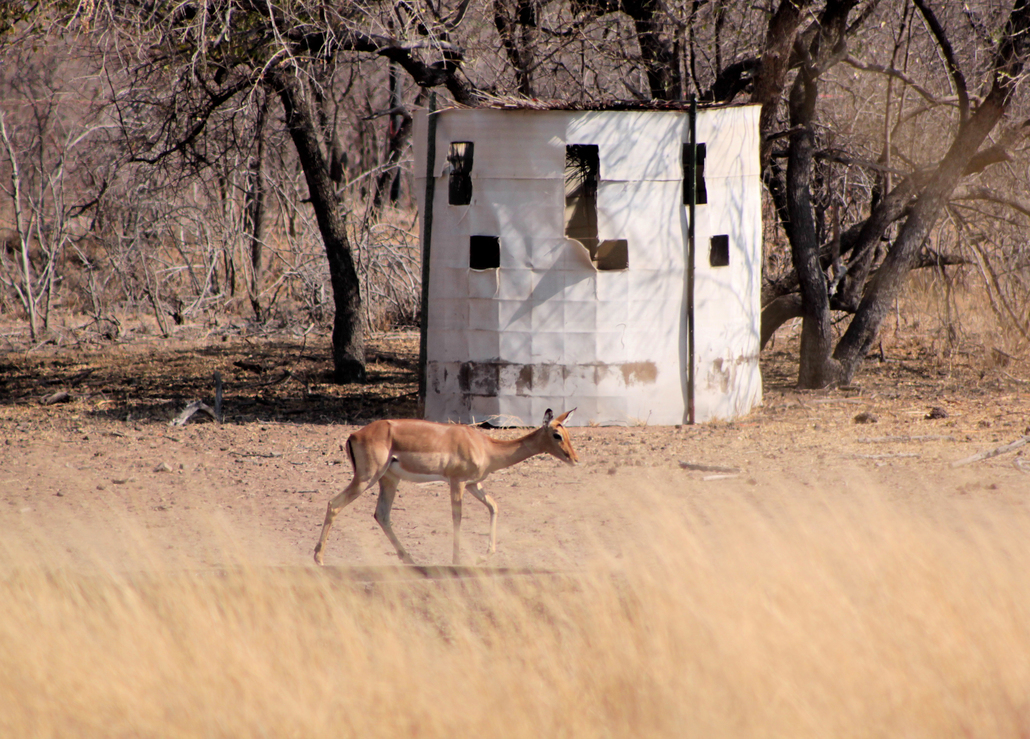Archery can be a complex sport for those that have little prior experience. In order to develop your skill, you should dive in with the proper equipment.
No one picks up or returns to a hobby without learning all they can beforehand. With archery, there is a lot of information you must be able to understand before you even begin shooting.
To make the process simpler, follow a few steps to get organized beforehand so your skill development will be easier in the long run.
Steps to Choosing a Proper Recurve Bow
Step #1: Determine Your Draw Weight Needs
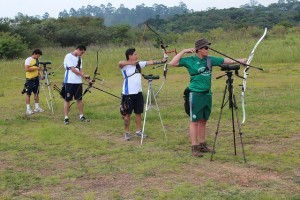
Courtesy of Alberto ….
One of the most important steps is determining your draw weight. The draw weight is the amount of force you will need to apply in order to draw the bow fully and properly.
This is an essential part of using the bow and it should be researched before even beginning to look at or choose a recurve bow model for purchase. The appropriate draw weight for the bow is determined by the archer’s age, gender and body weight.
As a beginner archer gains more strength, he or she may be able to forgo standard body weight designations based on his or her own development.
In general, children less than 100 pounds should start with a draw weight of 10 to 15 pounds. Small- and medium-sized adult females should aim for 25 to 35 pounds, while men of average weight should go for 40 to 55 pounds.
Larger men may need anywhere from 40 to 60 pounds of draw weight. For hunting game, a draw weight of no less than 40 pounds is recommended. This will allow for effective shots at safe distances. If this is above your suggested range, first practice with a weight you can handle easily, then work your way up.
Below is a chart that will help you determine your starting draw weight limit, based on your own body weight and gender. Chart is mostly suitable for beginners who have never shot a real recurve before.
Step #2: Determine the Purpose for Your Bow
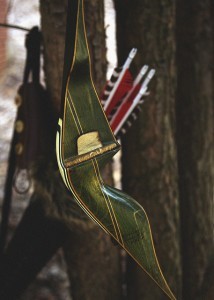
Courtesy of Jim Wrigley Photography
Any recurve bow can be used for shooting targets, but not every bow can be used to shoot game. As mentioned previously, your bow’s suitability for hunting game will be determined by its draw weight.
For the most popular game, such as elk, deer and turkey, a draw weight of 40 to 45 pounds is preferred. For even larger animals such as oxen, bears or buffalo, 55 pounds or more are needed.
For target practice only, any normal weight can be used, even as low as 25 pounds. If the bow will be used for both purposes, a weight of 40 pounds is a good choice. With the right practice, a good archer will adapt to higher weight quickly by training the right muscles.
Step #3: Compare Potential Bows
After choosing the appropriate draw weight and determining the purpose for your bow, you may begin to compare various models. Depending on your individual needs you may need to compare models based on different criteria, such as skill level, price and style.
Step #4: Find and Research Bow Reviews
Once you’ve found recurve bow models that pique your interest, find reviews for those models to learn as much as you can before you make the purchase. Check for the pros, cons and additional details and compare them to those of competing models to make narrowing down your choices much easier.
Step #5: Pick the Right Arrows
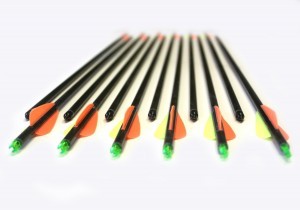 Choosing appropriate arrows may take some trial-and-error. Most people will not pick perfect arrows on the first try. After gaining experience, start out with arrows that feel decent at the time. After your skill has developed further you will learn more about the appropriate arrows for your needs and will be able to accommodate as time goes on.
Choosing appropriate arrows may take some trial-and-error. Most people will not pick perfect arrows on the first try. After gaining experience, start out with arrows that feel decent at the time. After your skill has developed further you will learn more about the appropriate arrows for your needs and will be able to accommodate as time goes on.
The arrows will respond differently based on the bow, your experience, the shooting distance and many other factors. Experimentation is the best way to get around this issue.
Step #6: Remember to Purchase Other Necessary Items
Most recurve bow packages come with the bare minimum. Included will be the bow and string only. This means you will have to purchase additional items to use your bow effectively, including:
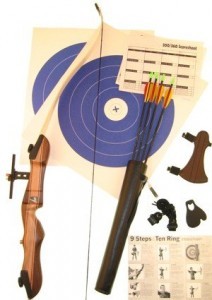 The Bow Stringer: The bow stringer is an essential part of an archer’s recurve kit because it provides a safe and consistent method for stringing the bow. The bow stringer allows the archer to use body weight to bend the bow enough to place the string over the limb tips.
The Bow Stringer: The bow stringer is an essential part of an archer’s recurve kit because it provides a safe and consistent method for stringing the bow. The bow stringer allows the archer to use body weight to bend the bow enough to place the string over the limb tips.- The Arrows: Obviously arrows, and field tips, are also essential for shooting. Most sporting goods stores will sell arrows with at least six in a pack. If also purchasing your bow, the technician on hand may be able to assist you in choosing arrows by measuring your draw length.
- The Nocking Points: The nocking point attaches to the string, coming in direct contact with the nock of the arrow. It provides a constant place on the bow string to use the arrow for consistent shooting, allowing the arrow a better chance of going in the proper direction each time the archer shoots. It is also helpful in preventing injury of the bow hand from the arrow’s vanes. A nocking point can be made of various materials, and a bow technician or more experienced archer can assist in placing the nocking point in the correct location.
- The Targets: Once all the other gear has been acquired, there should be targets with which to practice. They can be simple or advanced, but they should have a barrier that prevents the arrows from penetrating completely, as this may pose a hazard to others.
Additional Recommended Items
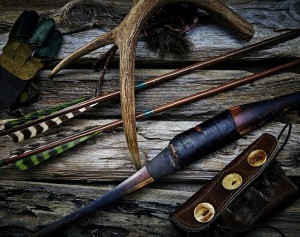
Courtesy of Jim Wrigley Photography
The following items are not required right away, but will prove helpful for maximum comfort. As comfort is a large part in shooting well, it may be a good idea to invest in a couple of them early on to get the most out of the sport.
- An Arm Guard: An arm guard will cover some or all of the arm to keep hair, skin and clothing away from the bow string as the arrow is released. With proper technique you will learn how to adjust your elbow to keep these parts out of the way, but until this skill develops, an arm guard covering most of the arm will protect your arm from the string should it make contact.
- Finger Tabs: Eventually, shooting a recurve bow without finger protection will lead to the development of sores or blisters. These may become a serious problem if they impact your ability to shoot properly. To prevent this from happening, you can wear finger tabs or gloves to prevent excessive wear to the skin. Some finger tabs even include spacers that separate the middle and index fingers, keeping you from pinching the arrow.
- An Arrow Rest: The arrow rest may be included with the recurve bow, but if it isn’t it should be purchased early on. The arrow rest provides the arrow a place for positioning as it is drawn. This component can be fixed or it may drop down as the arrow is released.
- Bow String Wax: Bow string is made of many fibers woven together. If these strings are not lubricated properly, the fibers risk rubbing together. This creates friction that can lead to breakage within the strands, and broken strands will weaken the bow string as a whole. To prevent this from happening, use bow string wax to provide lubrication while also offering protection against rain, dirt and other substances that may affect the quality of the string. With quality wax, cover the bow string every 2 to 4 weeks.
- A Broadhead Wrench: A broadhead wrench will help you to unscrew the broadhead tip from the arrow without risk of cutting your fingers. Depending on your type of archery you may not need this until a later time.
Optional Items
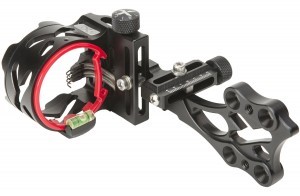 The following items are not absolutely essential, but they will prove to be helpful in making your archery experience more simple and enjoyable.
The following items are not absolutely essential, but they will prove to be helpful in making your archery experience more simple and enjoyable.
- A Sight: A sight is useful for helping you aim the bow. Many archers using recurve bows prefer to shoot instinctively, thus most recurve bows don’t include a sight. For beginning archers, these can be useful tools for learning where or how to aim before developing instinctive shooting skills.
- String Whisker Silencers: Whisker silencers are made of lightweight rubber and reduce the noise emitted by the bow string without sacrificing performance. They are not as important for target practice, but they will prove very valuable when hunting game.
- A Quiver: A quiver is a container used to hold your arrows before you use them. Merely placing arrows on or into the ground can be tough on the longevity of the arrows and tips as well as being inconvenient when reaching for a new one. This technique can also be dangerous for the archer and any others nearby. Quivers can be attached to the bow or they can be worn around the waist or across the shoulder. These devices make it much simpler to access a new arrow when necessary for the next shot.
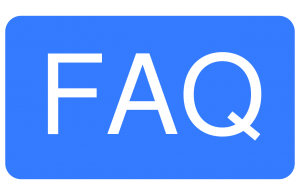 Frequently Asked Questions
Frequently Asked Questions
As you begin to figure out the tools and knowledge you will need even before starting or getting back into archery, a number of questions may arise. Luckily, if not answered already, some of these may be answered below.
Will the bow be ready to shoot right out of the box?
The short answer is “no.” The bow will need to be strung, then tuned before use. Tuning, like with a musical instrument, may take hours to complete properly.
What should the draw length of the recurve bow be?
Most recurve bows are already appropriate for a draw length of 28 inches. If your personal draw length is higher by a few inches you should still be able to shoot a 28-inch draw length recurve bow properly, though it will feel heavier to draw.
How much should the bow itself weigh?
For most people, a recurve bow weighing 3.5 pounds or less is just fine. The weight of the bow itself mainly affects the archer’s ability to carry it on longer hunting trips. Recurve bows for women and children will usually weigh closer to 2 pounds.
What should the length of the bow be?
An ideal bow length will be twice your draw length, at minimum. Longer bows tend to be more accurate, but they also make things more difficult when transporting from place to place.
What brand is the most reliable?
The bow’s manufacturer should be a top priority when making your decision as many companies produce low-quality products that may feature shoddy strings, limbs or other parts. Some of the best manufacturers include Martin, Bear, Hoyt, Samick and PSE, among others.
What is a take-down bow, and will I need one?
A take-down bow consists of 3 parts with two limbs being able to be separated from the riser, and there are numerous benefits to using this type over a standard one-piece. Take-down bows are easier to transport as they can be taken down and each part can be stored easily.
They are also easier to repair. If a portion of the bow is broken, that part can be removed and replaced or mended instead of having to service the entire unit. Take-down bows are helpful for beginning archers as they allow you to adjust draw weight.
The bow’s draw weight is determined by the construction and stiffness of the limbs. By purchasing a new set of limbs and removing the initial pair you can upgrade to a different weight.
How To Buy a Recurve Bow – Summary
Here is a quick recap of what was covered above:
- 1. Determine your draw weight.
- 2. Decide how you will use the recurve bow.
- 3. Compare potential bows.
- 4. Find reviews for these potential purchases to learn about each model.
- 5. Find appropriate arrows.
- 6. Purchase additional accessories as you deem necessary.
Use this information to make an informed decision that will develop your skill.
